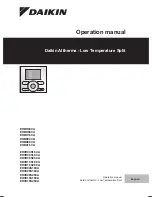
Instruction notice (EN)
15
NOT-PY68-EN-2020-v01
b.
Potential problems when actuating a valve
1 – If the valve doesn’t move, release the handle and change the actuator’s rotational direction to give it a little nudge.
Check again the direction of the torque retention.
2 – If there is increased resistance from the valve (torque applied to the actuator), the actuator will slow down until the
clutch will slip. At this moment, the motor will run but the output shaft will not. Release the throttle.
3 – Be very careful that the applied torque does not exceed the limits the valve can withstand, or use a torque limiter
(optional).
4 – In case of resistance resulting from deposits on the stem, turn the valve in both directions several times to ‘clean’ it.
modec
revolution counter (optional) enables you to always know which position the valve is in.
5 – When the closed position is reached, make sure the torque does not exceed the level that the valve can withstand.
Unless the procedure indicates otherwise, reopen the valve with a few turns so that the accelerated fluid “cleans” any
potential impurities from the valve, then close it again at the desired torque.
6 – When the maximum open position is reached, reclose with a few turns to avoid the valve being stuck in future. Doing
this also means that the valve is still able to turn when next actuated even if the operator turns it the wrong way, which again
helps prevent the valve being stuck.
Take note - the torque when closing a valve should always be inferior to the torque when opening a valve, in order
to guarantee that the valve can be reopened. Using a torque limiter for closing and opening a valve means you can
be always be sure to have enough torque in reserve for the valve to be reopened or reclosed.






































